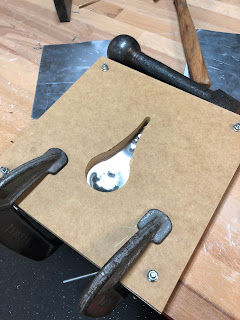Assignment 3: Personal Reflection
After completing four unique and different shaped objects, the aluminium model I have chosen to critically review is the tray.The tray looked like a simple shaped object however when fabricating the element it was not as easy as it looked.Throughout the creation of the tray I had learnt a variety of things and was able to gain a greater knowledge on the aluminium forming process.
Strengths
- After having completed two models previously some of the techniques used in creating the two objects before, were a significant benefit to forming the delicate shape in particularly the sides of the tray.
- In this project my smoothing/flattening out techniques were developed significantly in comparison to the bowl.The edges all had a nice rounded and smooth finish.
Weaknesses
- Due to being from a construction background, my ability to hit the aluminium softly was quite challenging, hence was a problem when trying to bend the sides of the tray up.Due to over hammering the side actually teared and was unfixable.
- As much as I made the shape perfect it was let down due to the fact it did not correspond with the other persons tray.Due to the split in the side it didn't provide the correct fit to my partners tray.
- Being able to get the perfect height of the sides all the way around due to stretching of the aluminium was also a let down for me.
- In creating the tray again, i will definetly take more time and patience in achieving the required curves and edges of the tray to make it look better.
Adequately, the skills i have learnt in other object making processes were useful specifically the use of moulds, flattening out, plemishing. However, at the same time skills that i learnt in the bowl when rounding the surface using a sandbag and timber stump were not useful.
Overall, this was a quite enjoyable project, which further developed my aluminium making skills essentially providing me with a greater degree of skill and knowledge for when i created my petrol tank.


















































